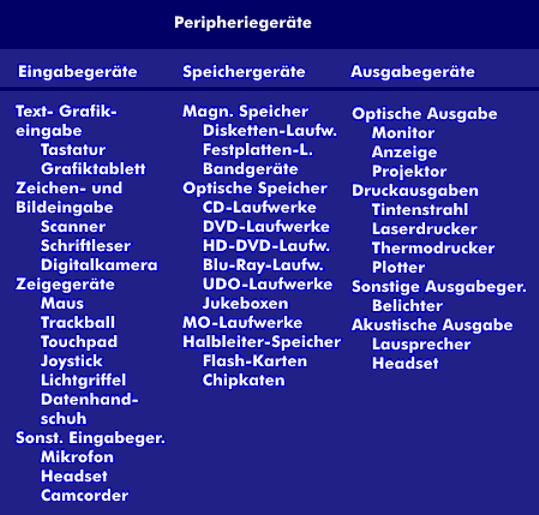peripheral device
According to the ISO definition, a peripheral device is a device that can communicate with a specific computer unit. It can send and/or receive data. Peripheral devices are all components for the input, output and storage of data that do not belong to the central processing unit( CPU) of a computer system, but are connected to it via the I/O bus.
Peripheral devices can be divided into the groups input devices, output devices and storage units. Data input devices include the classic input devices keyboard, computer mouse, joystick, scanner, graphics tablet, light pen, reading pen, surface pen, touch screen, multi-touch screen, data glove, and card readers for smart cards, magnetic cards, bar codes, fingerprints, etc. There are also peripherals for capturing sound, photos and videos such as microphones, digital cameras, video cameras and camcorders.
As for output devices, besides the classic output devices such as the screen, monitor, projector, printer, plotter, imagesetter, speaker and many others, there are the devices for data storage: Flash memory, memory cards, hard disk drive, solid-state drive, removable disk drive, CD drive, MO drive, DVD drive, tape drive, jukeboxes.

